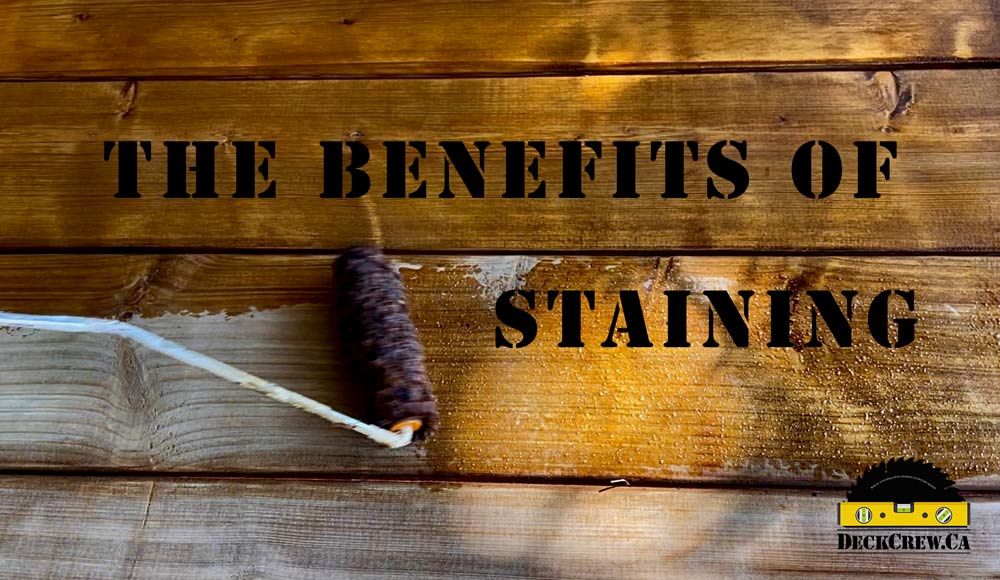Your deck is more than just a spot for summer barbecues; it’s an extension of your home. But without proper care, it can quickly become weathered and worn. That’s where staining comes in. In this article, we’ll explore why staining is essential for wooden and pressure-treated decks, and break down the simple process.
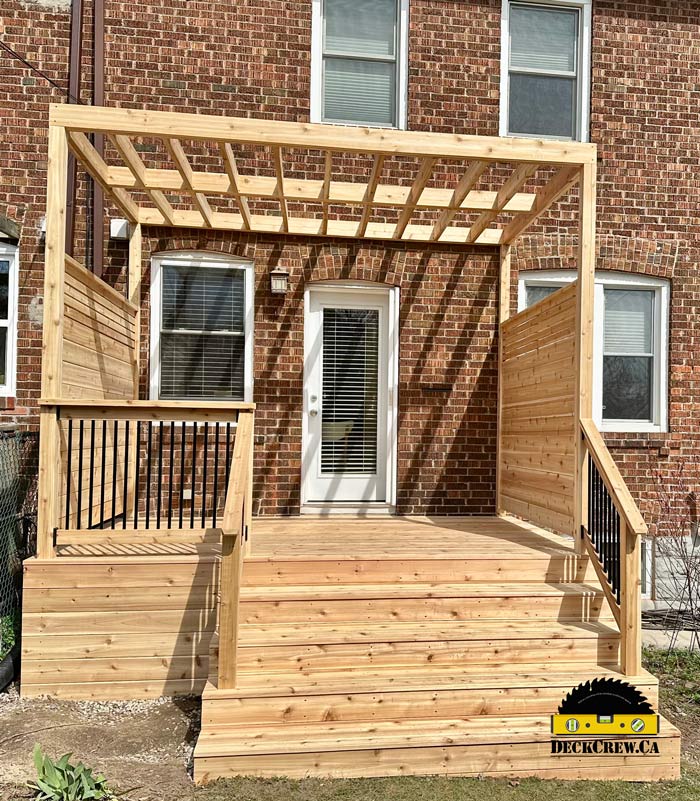
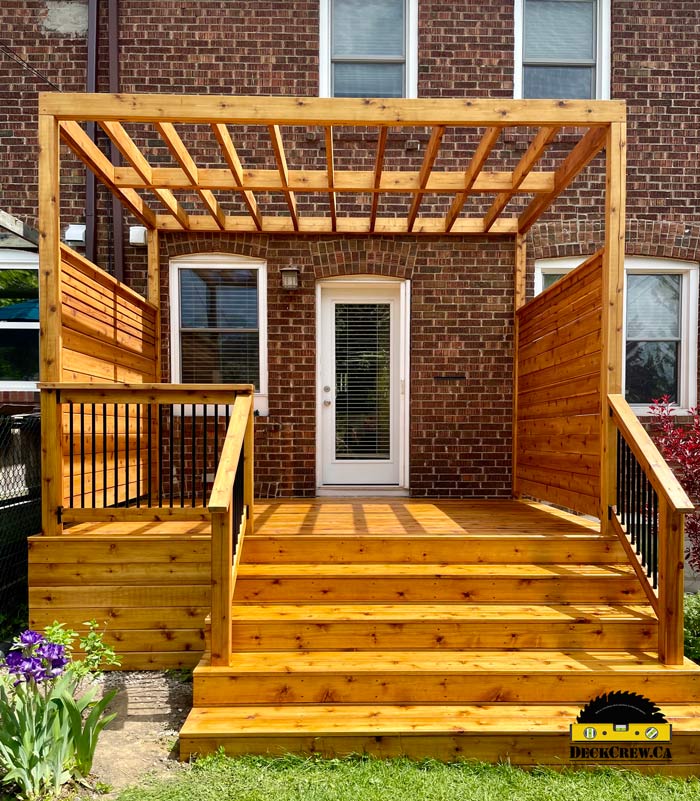
Why Stain?
Stain acts as a protective layer against sunlight, moisture, and other weather conditions that can cause damage to the wood, such as warping, cracking, or rotting. Stain helps to strengthen the wood fibers, making your deck more resistant to wear and tear from foot traffic, furniture, and other objects.
So again, staining isn’t just about looks; it’s about protection. Your deck faces sun, rain, and everything in between. Staining using a high-quality product creates a barrier that shields against damage like warping, cracking, and mold. It also prevents the wood from fading, keeping your deck looking fresh for longer.
Stained decks typically require less maintenance than untreated ones. Stain helps to seal the wood, reducing the frequency of cleaning and refinishing needed to keep your deck looking its best.
The types of deck stains that we work with contain additives that inhibit the growth of mold, mildew, and algae, which can cause discoloration and deterioration of the wood.
Staining your deck can enhance its natural beauty by enriching the color and grain of the wood. It also provides a finished look that can complement your outdoor space.
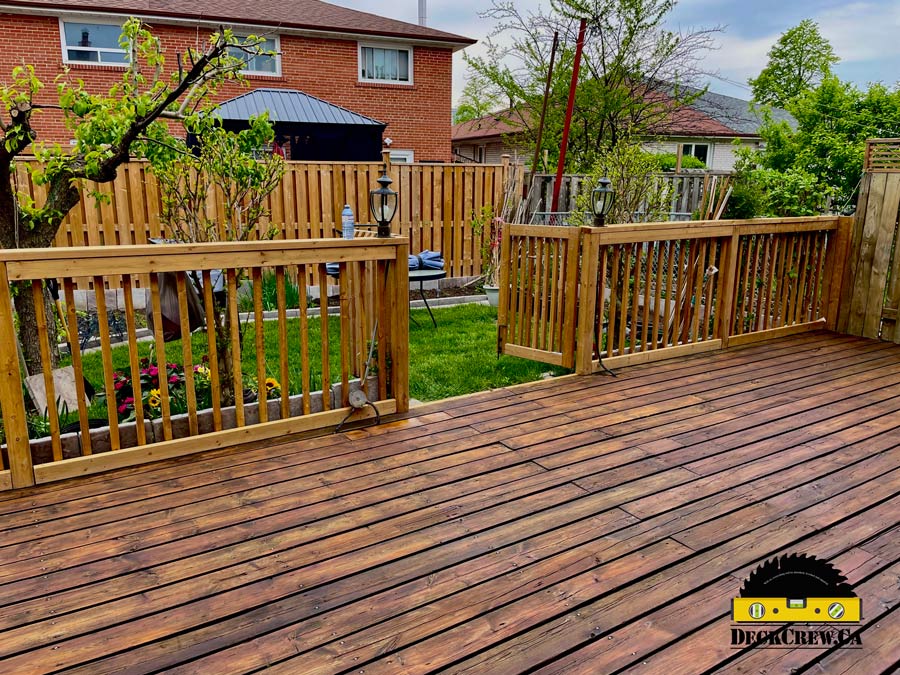
How Is it Done?
Staining can be very easy, just a call away. You simply reach out to Deckcrew.ca and our team will be working on your wooden structures in a matter of weeks.
However, If you decide to take the hard way, you can do it yourself.
First, clean your deck to remove dirt and grime. Use a pressure-washer for extremely deep stains or aged decks. Don’t forget to give the deck enough time and sunlight to dry up completely before applying the stain. Drying times may vary depending on factors such as temperature, humidity, and the type of stain used, so be sure to check the manufacturer’s instructions for guidance.
Next, if needed, sand any rough spots. For larger areas, you may want to use a drum or belt sander, while a handheld orbital sander is suitable for smaller sections and tight spots. Make sure to use sandpaper with a grit appropriate for your deck’s condition. Coarse grits (around 60-80) are suitable for initial sanding, while finer grits (100-120) are used for finishing.
Next, choose a stain that suits your style and climate. Consider factors such as the type of wood, desired color, level of protection, and environmental conditions.
Apply it evenly with a brush or roller, and let it dry. Apply a second coat if needed.
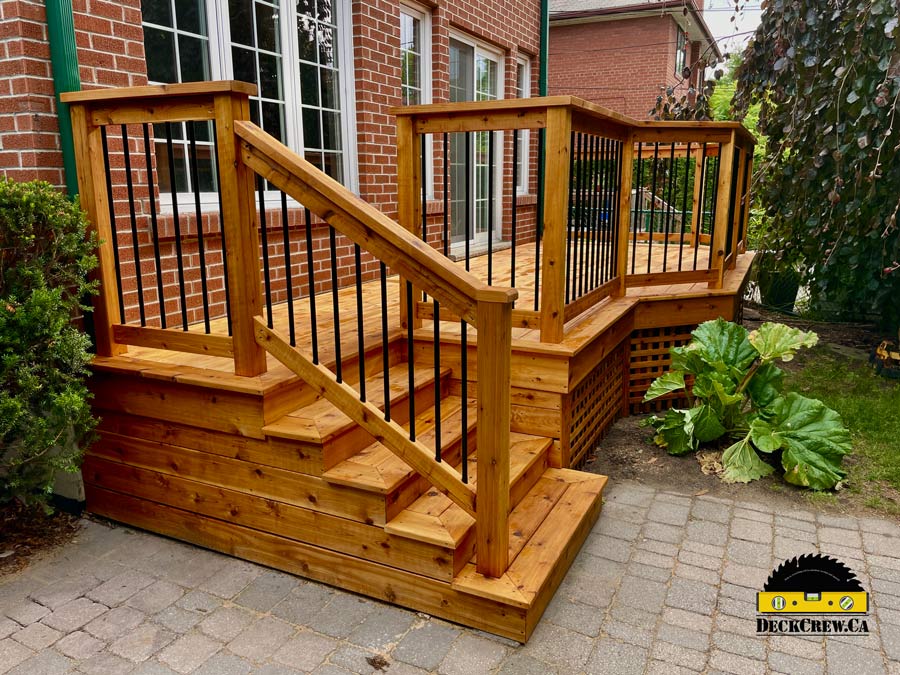
Benefits of Staining
At its core, staining is a process of treating the wood with a blend of pigments, binders, and additives that penetrate deep into its fibers, creating a durable and long-lasting finish. It can be done only on wooden surfaces and will not work on composite or PVC decks.
Unlike paint, which sits on the surface of the wood, staining seeps into the pores, bonding with the substrate to provide superior protection and color retention. Whether you opt for a transparent stain to keep natural grain og or a solid color stain that imparts rich, vibrant hues, the result is a deck that exudes warmth, character, and charm.
With a variety of colors and finishes available, you can personalize your deck to match your taste. Stained decks require minimal upkeep, so you can spend less time working and more time enjoying your outdoor space.
To keep your stained deck looking its best, perform regular maintenance tasks such as cleaning, reapplication of stain as needed, and periodic inspections for signs of wear or damage.
In conclusion, staining is a tried-and-true method for preserving the beauty and integrity of wooden and pressure-treated decks. By investing in staining, you’re not just enhancing the aesthetics of your outdoor space; you’re also fortifying your deck against the ravages of time and nature. If staining feels like an overwhelming task, opt out for composite or PVC decking materials that don’t require any maintenance other than washing.
Feel free to contact deckcrew.ca to ask any questions and get help with your staining and other deck-building projects.

